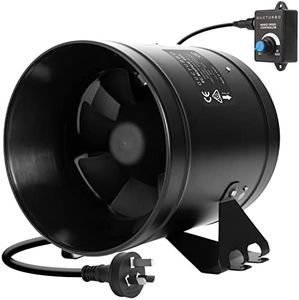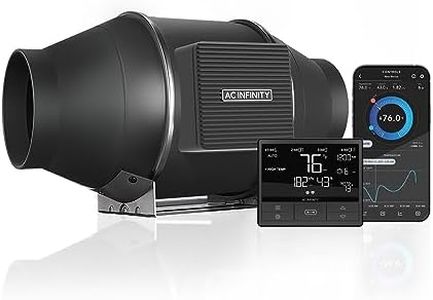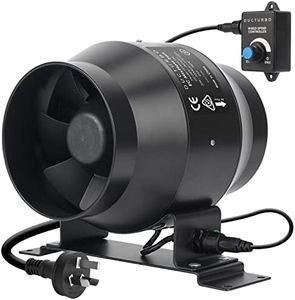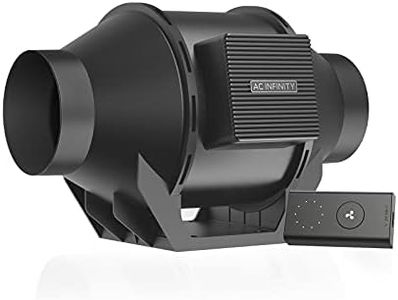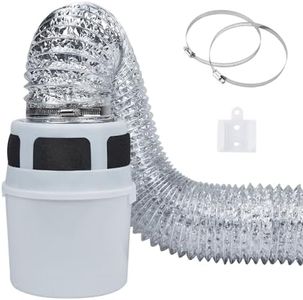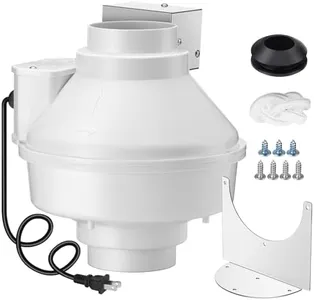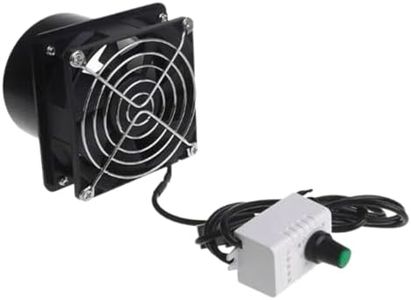We Use CookiesWe use cookies to enhance the security, performance,
functionality and for analytical and promotional activities. By continuing to browse this site you
are agreeing to our privacy policy
9 Best Dryer Vent Boosters
From leading brands and best sellers available on the web.Buying Guide for the Best Dryer Vent Boosters
Choosing the right dryer vent booster is important for making sure your dryer works efficiently and safely. These devices help improve airflow in long or complex vent setups, which reduces drying time and helps prevent lint build-up that can lead to fires. When shopping for a dryer vent booster, focus on key specifications to match your home’s needs and dryer setup, so you can get better drying performance, lower energy use, and a safer laundry area.Airflow Capacity (CFM)Airflow capacity, usually measured in cubic feet per minute (CFM), shows how much air the booster fan can move. This is a crucial spec because it affects how well the fan can support longer vent runs. Lower CFM fans (below 100 CFM) are more suitable for shorter, less restrictive vent paths, while Mid-range (100–180 CFM) works for typical residential needs where vents may be moderately long or have a few bends. High CFM (over 180) is mostly for long or complicated vent runs, such as those with several turns or multi-story setups. To pick the right CFM, check the total length and number of bends in your vent line—longer and more complex setups need a higher CFM to keep air moving and lint from collecting.
Activation MethodThe activation method tells you how the booster fan knows when to run. Some models have a built-in pressure switch that senses when the dryer is on, others use current-sensing technology, and a few require manual operation with a switch. Automatic options (pressure or current-sensing) are more convenient and safe, since you don’t have to remember to turn them on or off. Manual boosters might be best if you want a simple setup or if your dryer vent situation is unique. Think about your preference for convenience and safety: for most people, an automatic model is easiest and most reliable.
Noise LevelNoise level tells you how loud the booster fan will be while running, and it is usually measured in decibels (dB). Quieter fans (under 50 dB) are great for setups close to living areas or laundry rooms where noise might bother you. Mid-range (50–65 dB) is typical for most residential models and is acceptable for most homes. Louder fans (above 65 dB) may be noticed in quieter environments, but if your booster is in a basement or attic, this may not matter. Think about where your booster will be installed and how much sound might affect your comfort.
Installation Type and SizeThis spec covers how and where the booster is installed on your vent line, as well as the diameter it fits. Most home systems use 4-inch ducts, but always check the size to be sure your booster will fit. Some boosters are easy to install in-line with simple clamps, while others may need screws or extra hardware. Think about your vent’s path, any tight spaces, and your comfort with DIY work—the easier the installation, the less hassle for you, especially if you’re replacing or upgrading an old fan.
Maintenance RequirementsSince dryer vent boosters can collect lint over time, maintenance is important for safety and performance. Some units have easy-access panels or removable fan blades for quick cleaning, while others are more fixed and harder to open. The easier it is to access and clean the unit, the safer and more convenient it will be in the long run. If you value low-effort upkeep, select a model that’s designed for simple cleaning so you can help prevent lint buildup and potential hazards.
Safety CertificationsLook for safety certifications like UL, ETL, or CSA, which show that the booster meets established standards for electrical and fire safety. This spec is especially important because dryer vents handle hot air and lint, both of which can be fire risks if not managed properly. Always choose a model with at least one recognized safety mark to help ensure peace of mind and compliance with building codes.
